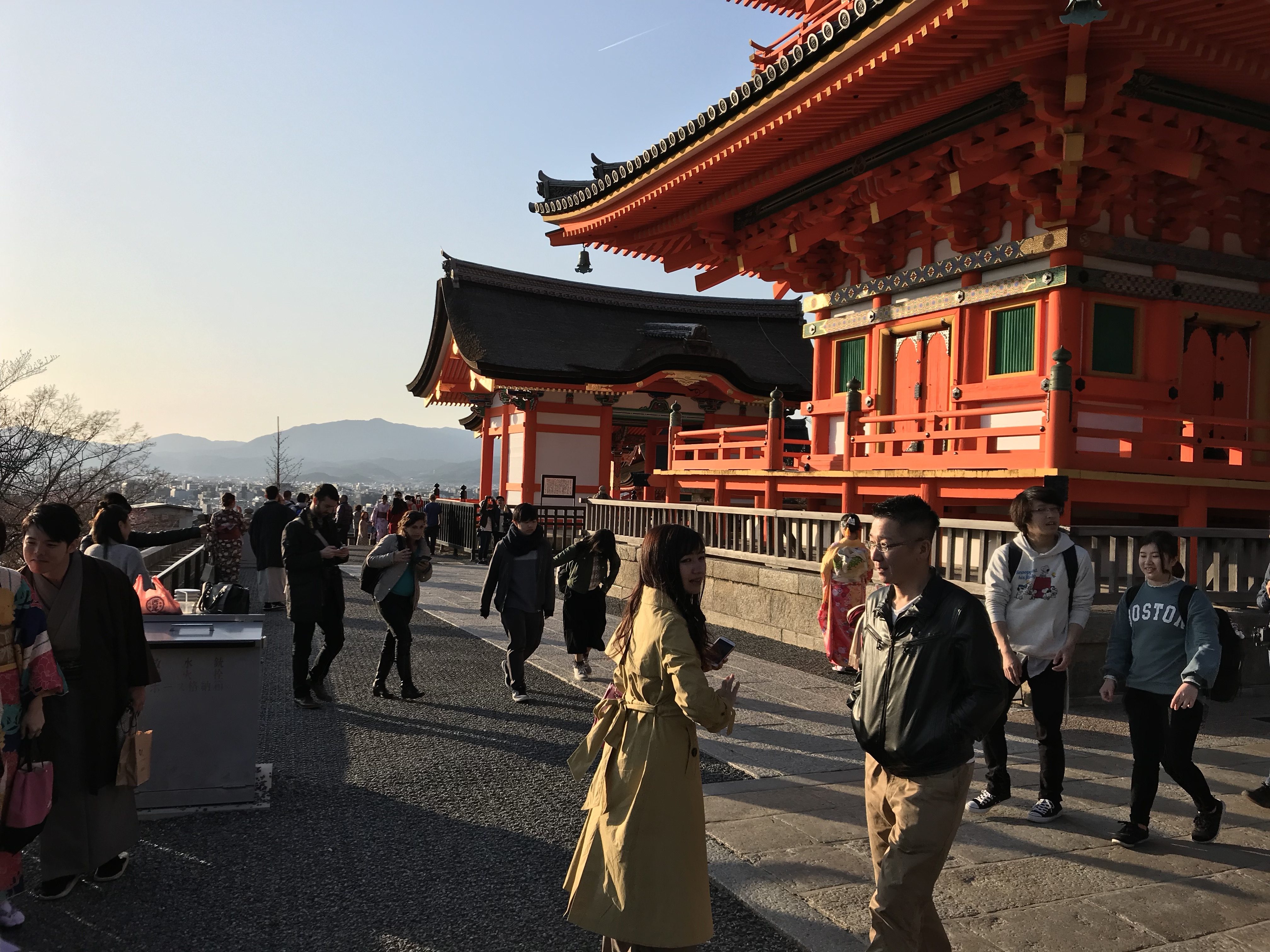Off to Osaka! pt 2: Kyoto!

Saturday, March 17, 2018 was Saint Patrick’s Day back in the U.S. In Japan, however, it was just another ordinary Saturday. Except this Saturday was still special. On this fine, fair-weathered day, Mitsuteru and I explored Japan’s cultural and historical capital: Kyoto. Kyoto is world famous for its many temples, shrines, and of course the Kyoto Imperial Palace. Kyoto was the capital of Japan from A.D. 769 to about 1869 when the capital was moved to Tokyo during the Tokugawa Shogunate. In fact, Kyoto and Tokyo are both spelled with the kanji 京 (kyo), meaning “Capital.” But enough with the boring stuff, let’s talk about what went down today.
I left my hotel room at about 9 AM and headed over to Shin-Osaka Station to meet with Mitsuteru. As I was waiting, I decided to eat breakfast at this store called Dean and Deluca, which I had never seen before. I saw they had avocado toast and so I decided to try it. I now understand how this became a fad back home; it was delicious! Later on, I found out that Dean and Deluca is actually an American brand, having originated in New York City. But back on track as Mitsuteru and I boarded a JR Train bound for Kyoto. Our train took us there in a rapid-express 25 minutes, allowing us plenty of time to explore Japan’s cultural center. We started off by visiting Nijo Castle (Nijō-jō), home of the Tokugawa family and the epicenter of the Tokugawa Shogunate, a significant historical event where power was returned to the Emperor and a new constitution was drafted. To put it simply, it led to the creation of Imperial Japan. I was in awe with the traditional architecture of the castle and palace as I was walking over the famous Nightingale floors, known for their “bird song” noises when stepped upon. Mitsuteru and I wandered endlessly through the palace and castle, gazing at the blooming Sakura (cherry blossom) trees. We eventually climbed to the top of one of the guard towers and were treated with a spectacular view of Kyoto and the surrounding valley, a place that truly blends tradition with modernity. Next, we headed back down and enjoyed some tea and desserts at the tea room, basking in the scenery of the garden and the serenity of the environment. It reminded me of how peaceful my home is, but that’s another story. After spending several hours at the castle, we visited the Kyoto Imperial Palace, the Capital of Japan until 1869. A couple years ago, the Government of Japan opened the Imperial Palace for tourists to visit. To my surprise, this was the first time Mitsuteru had stepped foot within the walls of the Palace. We bowed at the mighty main building, acting as the Emperor’s residence. The current version of this building was constructed in 1855 as previous versions were destroyed time and time again. We explored the Imperial Garden as well as various governmental buildings located within the confines of the Grounds. We boarded the bus to Kinkaku-ji (officially Rokuon-ji), a Buddhist Temple famous for its golden palace situated in the middle of a small lake. Surrounded by blooming Sakura trees, the mountains, the water, and the surrounding forest, it was the most beautiful place I have ever visited in the world. After exploring the Temple grounds some more, we boarded another bus heading for the opposite side of town, where we explored Kiyomizu-dera. This Temple was located near the top of a hill, providing visitors with gorgeous views of Kyoto and the surrounding valley. The sun was setting at this hour, providing a golden tone that amplified the oranges of the Pagoda and its adjacent building, the greens of the Forest, and the Kyoto skyline (although this made for poor picture quality). At this temple, we not only got to visit a shrine, but also explored underneath it in what SpongeBob would call “advanced darkness.” I was nervous; I couldn’t figure out which way was which and the only thing guiding me was a rope that took me three minutes to find. Fun. We then explored the main building, featuring a giant golden Buddha and even more incredible views of Kyoto. As the sun was setting, we walked down the mountain and, after nearly getting run over by an aggressive Porsche driver, ended up in Gion to do some shopping. Yes, Mitsuteru and I were nearly intentionally run over by some asshole in a hurry. We both shouted “Fuck You!” at the driver while simultaneously flipping the bird. It was the least we could do. Anyway, Mitsuteru helped me out significantly with finding the perfect Jade necklace stone for a certain someone and we headed off to a local restaurant to grab dinner. I ordered a Yakitori set, featuring skewers, miso soup, rice, salad, and some tempura. It was one of the best meals I have had in Japan and it was well worth it. After finishing our meal and discussing American and Japanese politics, we boarded the Keihan Line to Yodabashi Station where Mitsuteru and I parted ways as I boarded the Midosuji Line to Shin-Osaka Station. At this point, my day was complete.
I need to go back to Kyoto before leaving. I had the privilege of experiencing a side of Japanese culture that has truly been lacking. I experienced some history, as well as tradition, as I visited various monuments and temples, as well as walking past multiple visitors wearing kimono(s) and yakata(s). It was almost as if I was transported to a different era.
Note: This piece is a reflection piece. I can get into the history of these monuments at a future date if anyone wants.
Here are some pictures from what I regard as the most beautiful city in the world.









